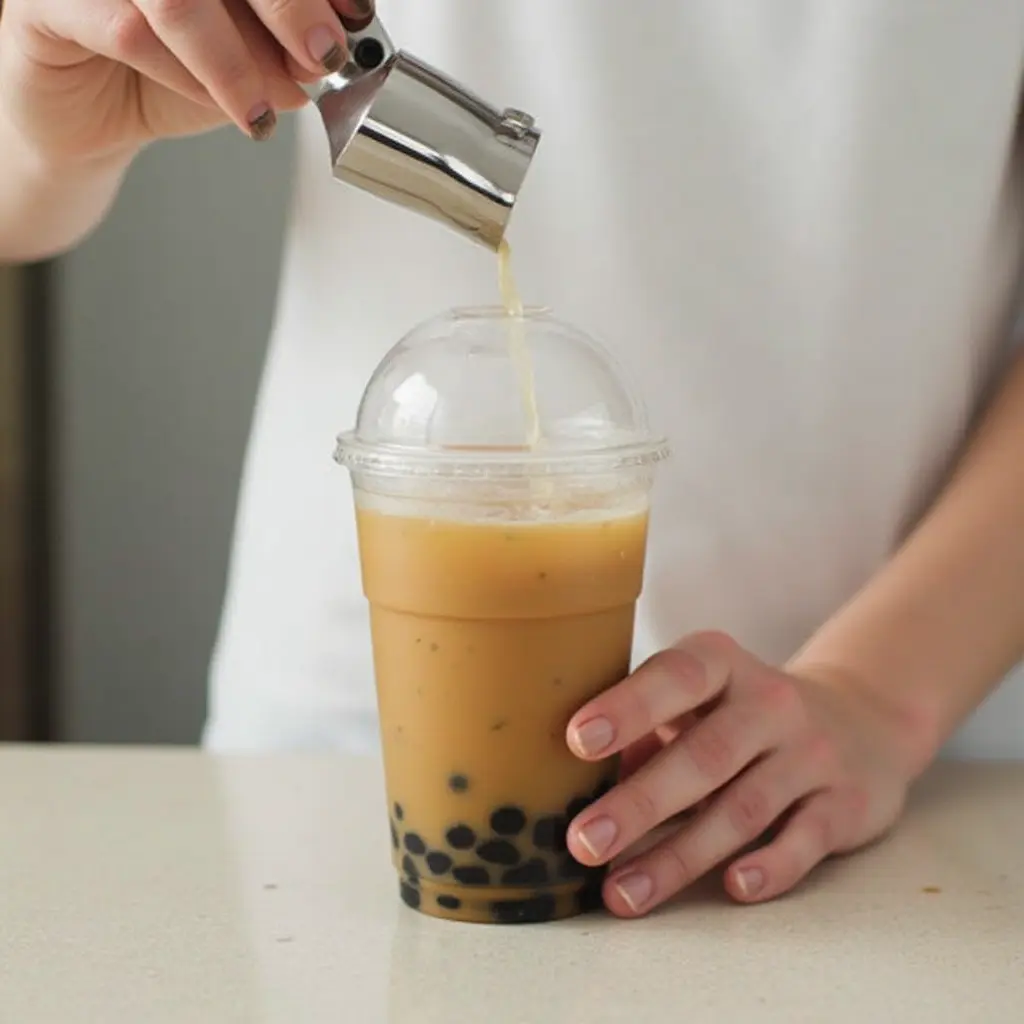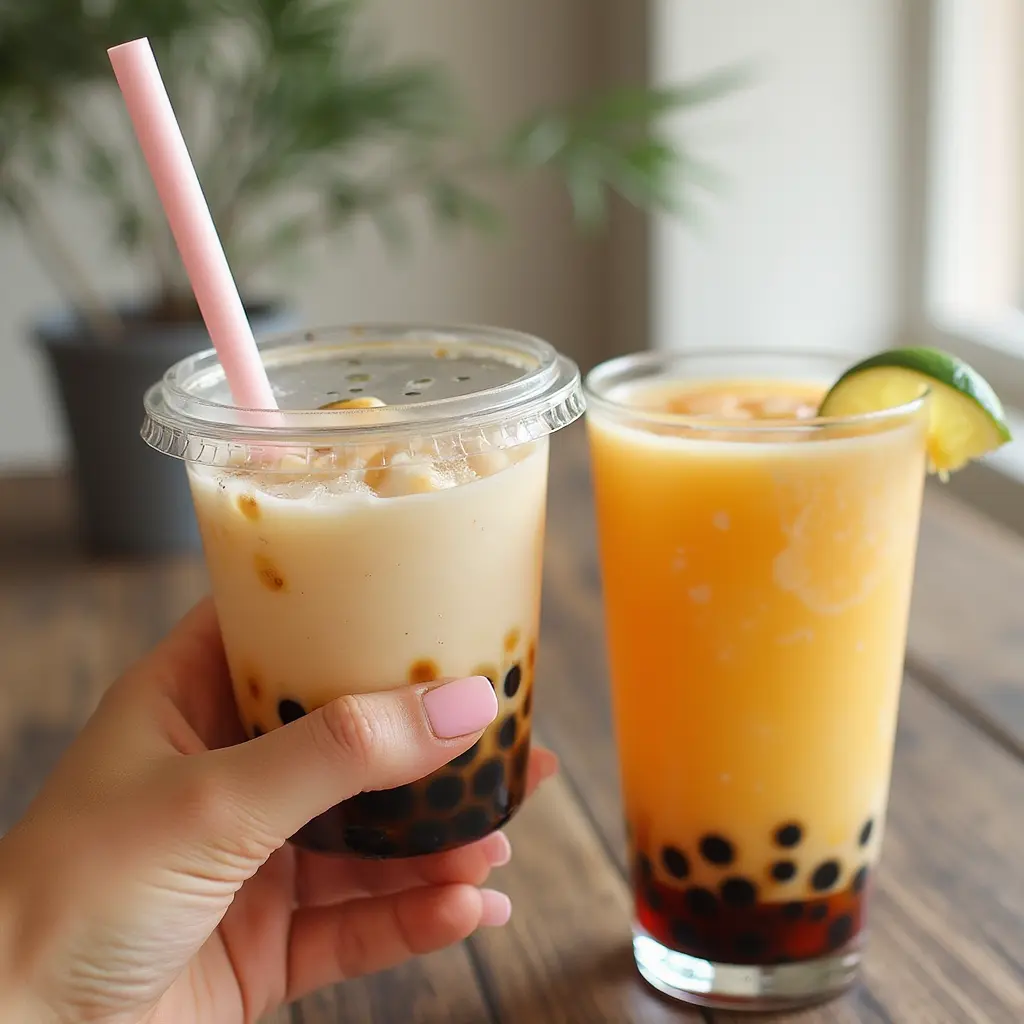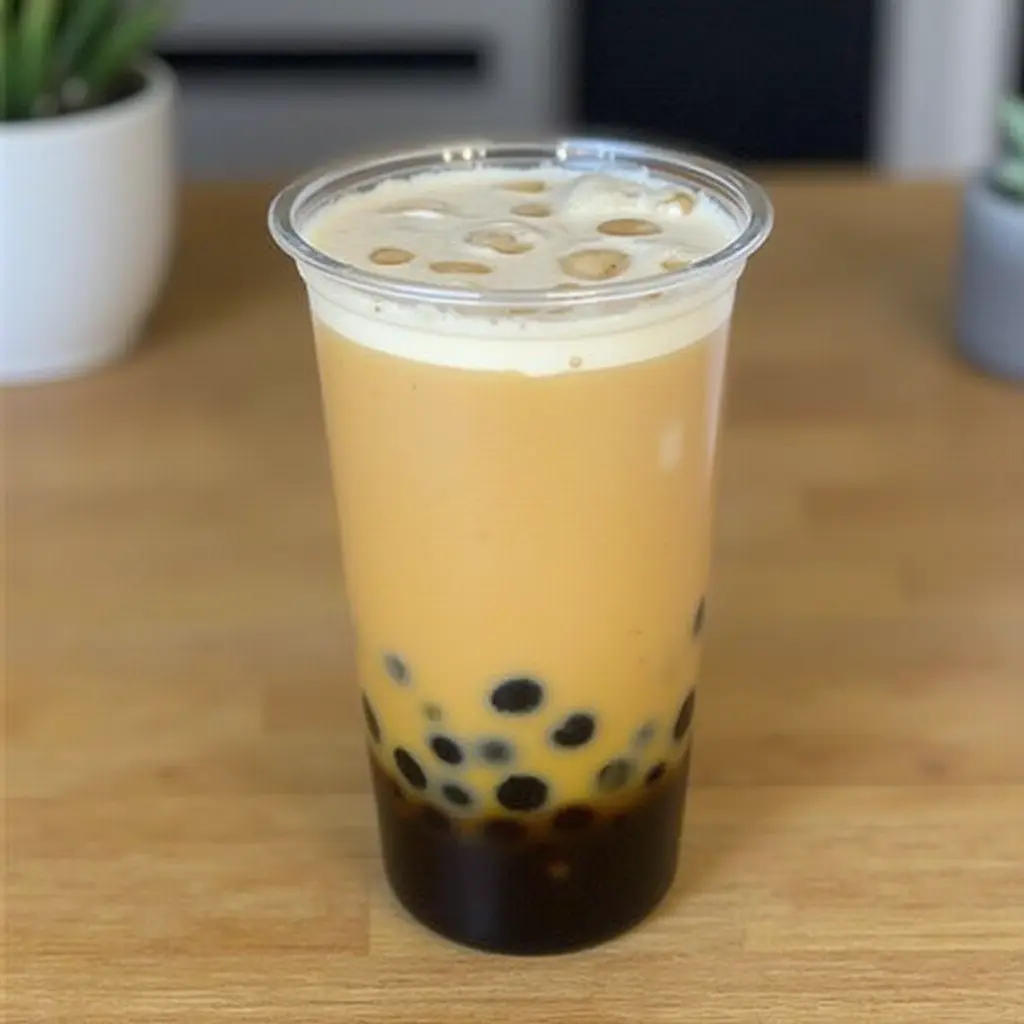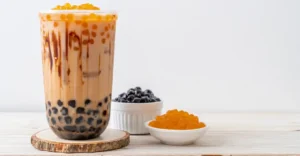Opening:
- Emotional Hook: “Remember that first sip of how to make bubble tea? The unexpected burst of chewy tapioca pearls, the refreshing sweetness of the tea, and the perfect balance of flavors. It was an experience, a culinary adventure that captivated your senses.”
- Connect with the Reader: “This guide will empower you to recreate that magic at home. We’ll delve into the world of bubble tea, from understanding the core ingredients to mastering the art of tea preparation and boba cooking. Get ready to embark on a delicious DIY journey!”
: Understanding Bubble Tea: A Refreshing Sensation
- Define Bubble Tea:
- Briefly explain bubble tea – an iced tea beverage typically shaken with ice and containing chewy tapioca balls (boba).
- Mention its origins in Taiwan and its global rise in popularity.
- Key Components:
- Tea Base: Discuss the various tea options (black tea, green tea, oolong tea, fruit tea).
- Milk or Cream: Explain the role of milk in creating different flavor profiles (milk tea, fruit tea).
- Sweeteners: Discuss sugar, honey, syrup options, and their impact on sweetness.
- Boba (Tapioca Pearls): Explain the process of making tapioca pearls, their chewy texture, and popular variations (brown sugar boba, flavored boba).
- Toppings: Mention other popular toppings like jelly, pudding, and fruit.
: Gathering Your Ingredients: A Bubble Tea Pantry

- Tea Selection:
- Recommend high-quality loose leaf tea or tea bags.
- Briefly discuss the flavor profiles of different teas and their suitability for bubble tea.
- Milk Options:
- Discuss whole milk, skim milk, plant-based milk alternatives (soy, almond, oat).
- Sweeteners:
- Explore different sweeteners (sugar, honey, agave syrup, simple syrup).
- Mention sugar substitutes for those seeking lower-sugar options.
- Boba Pearls:
- Where to buy pre-made boba pearls or how to make them at home.
- Discuss different sizes and colors of boba pearls.
- Other Ingredients:
- List and discuss other potential ingredients like fruit juices, syrups (honeydew, lychee, strawberry), and toppings (popping boba, jelly).
: Preparing the Tea: Brewing the Perfect Base
- Steeping the Tea:
- Provide a step-by-step guide on steeping loose leaf tea or brewing tea bags.
- Discuss factors influencing tea strength (water temperature, steeping time).
- Tips for creating a strong tea base for milk tea.
- Cooling the Tea:
- Methods for cooling the tea quickly (ice bath, refrigerator).
- Importance of chilling the tea completely before shaking.
: Cooking the Boba: Achieving the Perfect Chewiness

- Boiling the Boba:
- Step-by-step instructions for boiling boba pearls.
- Importance of proper cooking time and temperature to achieve the desired chewiness.
- Tips for preventing boba from sticking together.
- Sweetening the Boba:
- Methods for sweetening boba (soaking in simple syrup, adding sugar to the boiling water).
- Discuss the importance of proper cooling to prevent the boba from becoming too hard.
- Storing Cooked Boba:
- Tips for storing cooked boba to maintain freshness (refrigeration, airtight containers).
: Assembling Your Bubble Tea: The Shaking Technique
- Shaking Method:
- Explain the importance of shaking vigorously to mix all the ingredients thoroughly.
- Recommend using a shaker bottle or a sturdy container with a tight-fitting lid.
- Tips for preventing spills during shaking.
- Adding Ice:
- The role of ice in chilling the drink and creating a refreshing texture.
- Tips for using crushed ice or ice cubes.
- Layering Ingredients:
- Briefly discuss the concept of layering ingredients (tea, milk, boba) for visual appeal.
: Exploring Flavor Combinations: Unleash Your Creativity
- Classic Combinations:
- Introduce popular flavor combinations (black tea with milk, green tea with honey, fruit tea with lychee jelly).
- Provide a brief description of each flavor combination.
- DIY Flavor Experimentation:
- Encourage readers to experiment with different tea types, sweeteners, and toppings.
- Provide a few unique flavor combinations to inspire creativity.
: Making Bubble Tea at Home: Tips and Tricks

- Using a Tea Infuser:
- Discuss the benefits of using a tea infuser for loose leaf tea.
- Tips for choosing the right type of tea infuser.
- Cleaning and Maintaining Equipment:
- Importance of cleaning the shaker bottle and other equipment thoroughly after each use.
- Tips for preventing mold and bacteria growth.
- Troubleshooting Common Issues:
- Addressing common problems: overcooked boba, watery tea, insufficient sweetness.
- Provide solutions and preventative measures.
: Bubble Tea Beyond the Basics: Exploring Variations
- Cold Foam Bubble Tea:
- Briefly explain the concept of cold foam and how to create it.
- Discuss popular flavor combinations for cold foam bubble tea.
- DIY Boba Recipes:
- Provide a simple recipe for making homemade boba pearls.
- Discuss alternative boba options like popping boba and jelly.
- Bubble Tea Cocktails:
- Briefly explore the concept of alcoholic bubble tea cocktails.
- Mention popular spirit pairings for bubble tea.
: Frequently Asked Questions (FAQs)
- : Can I use any type of tea for bubble tea?
- Discuss suitable tea types and those to avoid.
- : How long does cooked boba last in the refrigerator?
- Provide guidelines for storing cooked boba.
- : What if my boba is too hard?
- Discuss possible causes and solutions.
- : Can I make bubble tea without a shaker?
- Discuss alternative mixing methods.
- : Where can I buy bubble tea supplies?
- Mention online retailers and local stores that sell bubble tea ingredients.
Conclusion, how to make bubble tea
- Recap: Summarize the key takeaways of the article: the importance of quality ingredients, the art of tea preparation and boba cooking, and the joy of creating delicious bubble tea at home.
- Call to Action: “Now that you have the knowledge and confidence, it’s time to unleash your inner mixologist! Experiment with different flavors, share your creations with friends and family, and enjoy the refreshing and rewarding experience of homemade bubble tea.”
Note:
- This is a comprehensive outline. The actual article should be written in a conversational and engaging tone, with a focus on providing valuable information and creating a seamless reading experience.
- Remember to use visuals (images of the process, finished product, ingredients) to enhance the article and make it more visually appealing.
- Conduct thorough research and cite your sources appropriately to ensure accuracy and build credibility.
- Use relevant keywords naturally throughout the article to improve search engine rankings.
This outline provides a strong foundation for your in-depth article on how to make bubble tea. Remember to write with passion and enthusiasm to create a truly captivating piece that resonates with your readers.
Disclaimer: This outline is for informational purposes only and does not guarantee any specific results.
Table of Contents of how to make bubble tea
same dring like how to make bubble tea
when you try the meal, give us your opinion
0.0 out of 5 stars (based on 0 reviews)
reviews
There are no reviews yet. Be the first one to write one.
